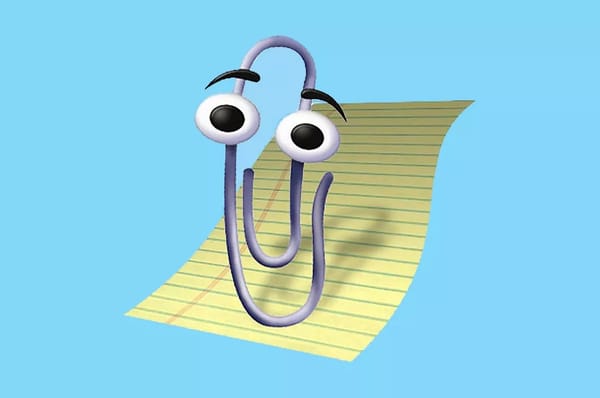Changing Twitter’s name was Xtremely reckless
Musk had brand magic, and now he doesn't.

“The Twitter bird looking really sad, sat on its own. An X is looking at the Twitter bird, looking pleased with itself” via Bing Image Creator
From the Evening Standard, what seems like so long ago, back in August:
Elon Musk’s rebranding of Twitter as “X” began at the tail end of July 2023.
The social media platform now sports a new “X” logo on its mobile apps for iPhone and Android, following an earlier change to its website and Twitter accounts.
Musk originally bid farewell to the Twitter brand on July 23 in a flurry of tweets. Shortly after, the company’s iconic bird symbol, named after pro-basketball player Larry Bird, was replaced with a new X logo on its website and headquarters.
Twitter was one of the world’s most recognisable brands, and probably the most expensive brand owned by a company that almost never turned a profit. According to Brand Finance, a research and consultancy agency, the brand itself was worth almost $4 billion. Remember – Musk paid $44 billion for the company, meaning in one fell swoop the gazillionaire lost 9% of the company’s value.
Twitter was a one-of-a-kind brand. Set aside how badly managed the company was, or the fact that the product stagnated for years, from a brand perspective, the thing was gold-dust. The salience that blue bird had all over the world was almost unbeatable, and now it’s gone.
Here’s all the ways Musk ruined an icon.
Thanks for reading Speci! Subscribe for free to receive new posts.
(Re)“Tweet”
The word “tweet”, which was also lost in the rebrand, was (is?) synonymous with “short burst of information posted online”. When someone tweeted, you knew that they had posted a short update to the internet, and that short update was hosted on Twitter.
You can’t begin to state how valuable it is to be synonymous with something that millions of people are doing every day. To have a name for an action on your product that people actually say.
Sure, people are posting to the internet all the time. I post on Instagram. I post to this newsletter. But on Twitter? I tweet.
This sounds like a trivial thing, but it’s not. Human brains are shortcut machines. We’re subconsciously searching for the shortest way to something, and the shortest way takes preference in our minds.
Saying “the President tweeted his support for unions” is much faster than saying “the President posted that he supports Unions on X (formerly Twitter)”, so much so that you might even forget to say “on X” at the end.
With this change alone, the brand might not even get a mention, whereas before it featured in every sentence.
Twitter has gone from having a verb that it owned (”tweet”), to having a generic, apply-to-every-platform verb (”post”). That’s free awareness, millions of times a day, disappeared. Gone.
If you manage a brand and you’ve stumbled across your own verb (because no one does this on purpose – it’s always an accident!) – you should wrap that word up in cotton wool and keep it as safe as you can. It’s a killer asset that sets of a flywheel of growth (although you’ll find it very difficult to measure it!).
Words said again and again lead to salience and top-of-mindedness – especially if they’re verbs.
Free salience
In shop windows, on restaurant menus, on billboards and in website footers around the world, you’d be hard-pressed not to find at least one of three logos: the Instagram camera, Facebook’s white F in a blue circle and a simple blue silhouette of a bird. Twitter.
They’re everywhere. Small and medium high street businesses and restaurants were told throughout the 2010s that building a social presence online was good for business and they duly followed that advice.
And so that bird is in millions of physical locations – windows, menus, reception desks. But now that bird means nothing.
Times have changed, too. Building a social media presence is less important for small businesses compared to the heydays of the 2010s. At least, that’s true for Twitter, because unlike Instagram, who’ve built lots of tools for small businesses, they’ve done nothing to keep these businesses happy and engaged on their platform. And, if Musk’s product decisions so far are any indication, it doesn’t look like that’ll change any time soon.
This means that when the millions of restaurants around the world come to change their menus or update their window displays, or the local plumber decides to update his website, they’re removing the bird (because it’s dead), and they’re not replacing it with the X.
First the verb, now the bird.
The worst thing? The bird – a distinctive, differentiated asset – is replaced by something very generic. It’s on every single QWERTY keyboard in the world.
Bye bye birdy
I have a special reverence for brands who can achieve salience for their logo without also putting their brand name in it. It’s amazing. Apple, of course, is an excellent example of this. The Amazon smile. The Pespsi Globe. The Twitter Bird (”Larry”).
It takes an incredible amount of exposure – usually paid for in marketing pounds – to imprint a non-wordmarked logo into humans’ brains. The Amazon smile only exists as a brand code because Amazon have invested heavily in their brand coding over the last five years – millions of pounds in TV ads, repainting their vans, redesigning sub-brands to focus more on the smile and less on the “Amazon”.
The Pepsi Globe is famous only because it’s on (almost) every shop shelf in the UK and in countless TV ads reminding us they’re better than Coke.
But Twitter didn’t have to do any of that. All they needed to do was build a good looking Tweet embed and share feature into their website and apps, and anytime anyone said anything important on Twitter, it’d get picked up and displayed with a prominent Twitter bird on any news channel (with high levels of attention), website or print cover.
The Twitter bird was everywhere, getting the kinds of exposure that Apple pays billions for in TV and out of home advertising.
And now, it’s replaced by a generic X. In black.
Barely noticeable as people share tweets less and less and less.
The little things add up
All of these things add up to an aggregate awareness and familiarity effect, and Twitter paid for none of them. Brand managers the world over would high jump at the chance to have “tweet” in the brand bag.
To be the kind of service that businesses find so useful for their own growth, that they display your logo on their brand touch points, like menus or shop windows or websites.
To have been present at all the world’s big events, live on CNN or Sky News or the BBC, driving people back to your service and encouraging more, often subconsciously, to sign up.
But renaming Twitter as X, getting rid of Larry Bird and killing the Twitter blue in favour of black killed all those things for Musk and X Corp.
Just one of those things is hard to find and even harder to create.
All three could be brand magic. And now, there’s just X.





